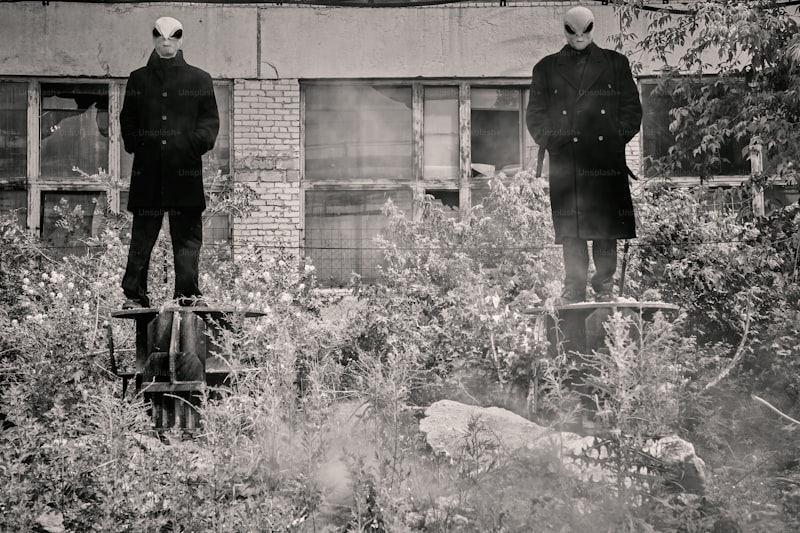One of the most chilling chapters in crime history is the case of Jack the Ripper, whose unidentified spree of murders in 1888 London sent shockwaves through Victorian society. The Ripper’s gruesome mutilations of women in the impoverished Whitechapel district remain unsolved to this day, fueling endless speculation and inspiring countless books and films.
Moving forward, the 1911 theft of the Mona Lisa from the Louvre Museum in Paris stunned the world. The daring theft by Vincenzo Peruggia, who concealed the iconic painting under his coat, highlighted the vulnerability of even the most esteemed cultural institutions. The Mona Lisa’s eventual recovery in Italy two years later added a twist to this extraordinary tale of art theft.
In more recent history, the terror attacks of September 11, 2001, forever changed global perceptions of security and terrorism. The coordinated hijackings of commercial airplanes by Al-Qaeda operatives led to the collapse of the Twin Towers in New York City, claiming thousands of lives and leaving an indelible scar on the American psyche. The aftermath reshaped international policies and ignited ongoing debates on civil liberties versus national security.
These examples illustrate how crime history spans from the macabre and mysterious to the brazenly audacious and politically charged. Each event not only reflects the perpetrators’ motives and methods but also exposes vulnerabilities in societal structures and security measures. They serve as cautionary tales and reminders of the fragility of peace and order in our communities.
Unveiling Infamy: Notorious Crimes That Shook the World
Human history is marked by moments of great triumph and profound tragedy. Among the darkest chapters are those defined by notorious crimes that sent shockwaves across the globe. These events, steeped in infamy, serve as stark reminders of the capacity for human darkness amidst the quest for justice and understanding.
One such chilling tale is that of Jack the Ripper, whose reign of terror in Victorian London remains a haunting mystery to this day. The unidentified serial killer prowled the streets of Whitechapel, gruesomely murdering and mutilating women. Despite numerous investigations and theories, Jack the Ripper’s true identity has never been conclusively established, leaving a legacy of fear and fascination.

Moving forward, the assassination of President John F. Kennedy in 1963 continues to captivate the world’s imagination. The shooting in Dallas, Texas, during a motorcade through Dealey Plaza shocked the nation and led to intense scrutiny over the circumstances surrounding the president’s death. Conspiracy theories abound, adding layers of complexity to an already tragic event that forever altered American history.
In more recent times, the terrorist attacks on September 11, 2001, forever changed global security and geopolitical landscapes. The coordinated hijackings of airplanes by Al-Qaeda operatives resulted in the destruction of the Twin Towers in New York City, along with significant damage to the Pentagon and a failed attack on the White House. The aftermath of 9/11 reshaped international relations, ushering in an era of heightened security measures and ongoing conflicts.
These infamous crimes are not merely historical footnotes but enduring symbols of human vulnerability and resilience. They prompt reflection on the nature of evil, the pursuit of justice, and the enduring quest for answers in the face of tragedy. As we grapple with their legacies, these events remind us of the importance of vigilance, empathy, and a steadfast commitment to understanding the complexities of the human experience.
From Infamous to Obscure: Untold Tales of Crime’s Darkest Hours

Ever wondered about the hidden narratives behind some of history’s most infamous crimes? Join us on a journey into the shadows of the past as we uncover the untold tales of crime’s darkest hours.
Imagine stepping back in time to an era when the world trembled at the mention of notorious criminals like Jack the Ripper or Al Capone. These names echo through history books and movies, but what about the lesser-known figures who operated in the murky corners of crime?
In the annals of crime, there are stories that captivate and chill in equal measure. Take, for instance, the case of the Zodiac Killer, whose cryptic messages and elusive identity continue to baffle investigators to this day. Or delve into the exploits of the Pink Panthers, a sophisticated network of jewel thieves whose heists spanned continents, leaving authorities scratching their heads.

But it’s not just the high-profile cases that intrigue. Sometimes, it’s the quieter, more obscure tales that leave a lasting impression. Consider the story of the Isabella Stewart Gardner Museum heist, where priceless artworks vanished into thin air, leaving behind a mystery that remains unsolved decades later.
What drives these individuals to commit such audacious acts? Is it greed, desperation, or something deeper and more complex? These questions linger as we explore the human psyche through the lens of crime.
In exploring these untold tales, we shine a light on the darker side of humanity. It’s a reminder that behind every headline-grabbing crime, there are layers of intrigue and motivation waiting to be uncovered. These stories not only entertain but also challenge our perceptions of right and wrong, leaving us pondering the thin line between hero and villain.
Join us as we delve into the shadows and uncover the untold tales of crime’s darkest hours. From the infamous to the obscure, each story reveals a glimpse into a world where truth is often stranger than fiction.
This article aims to capture the reader’s interest by weaving together intriguing stories and posing rhetorical questions to maintain engagement. It uses an informal tone to make the content more relatable and accessible.
Dark Chronicles: Grisly Crimes That Defined an Era
Imagine the eerie streets of Victorian London, where the shadow of Jack the Ripper loomed large, perpetrating a series of brutal murders that sent shockwaves through the city and beyond. The Ripper’s identity remains a mystery to this day, adding to the intrigue surrounding these gruesome acts. Each victim became a piece in a puzzle that continues to captivate true crime enthusiasts and historians alike.
Moving forward in time, to the desolate plains of the American Midwest during the Great Depression, the name “Bonnie and Clyde” resonates as symbols of outlaw romance and criminal audacity. This infamous duo embarked on a spree of bank robberies and murders, evading law enforcement with a blend of cunning and charisma that captured the public’s imagination. Their tale, immortalized in films and folk songs, illustrates how crime can sometimes blur the lines between villainy and anti-heroism.
Venturing into the chilling realm of Nazi-occupied Europe, the name “Auschwitz” stands as a stark reminder of the horrors of genocide. The systematic murder of millions, orchestrated with chilling efficiency, forever scarred the pages of history. The scale and brutality of these crimes against humanity continue to serve as a poignant lesson in the darkest depths of human cruelty.

These dark chronicles are not mere cautionary tales; they are stark reminders of the capacity for evil that exists within us all. They force us to confront uncomfortable truths about society, justice, and the human condition itself. As we delve into these grisly tales, we are compelled to ask ourselves: what drives individuals to commit such heinous acts? And how do these narratives shape our understanding of morality and justice?
Infamous Acts: The Most Sinister Crimes in Human History
One of the most notorious chapters in history is the reign of terror unleashed by Jack the Ripper in Victorian London. Operating in the late 19th century, this unidentified serial killer gruesomely murdered and mutilated at least five women in the impoverished Whitechapel district. The Ripper’s ability to evade capture and the brutal nature of his crimes sparked widespread fear and speculation, leaving an enduring mystery that continues to captivate criminologists and historians alike.
Moving across continents and centuries, the Holocaust stands as a haunting testament to state-sponsored genocide. Orchestrated by Nazi Germany during World War II, the Holocaust led to the systematic extermination of six million Jews, alongside millions of others deemed undesirable by the regime. The horrors of concentration camps like Auschwitz-Birkenau and the sheer scale of human suffering inflicted under Hitler’s regime serve as a stark reminder of the depths of human cruelty and ideological fanaticism.
In more recent times, the September 11 attacks in 2001 forever altered the global landscape. Orchestrated by the terrorist group al-Qaeda, coordinated hijackings of commercial airliners resulted in the destruction of the Twin Towers in New York City and a section of the Pentagon in Washington, D.C. The attacks claimed nearly 3,000 lives and triggered far-reaching consequences, including the global War on Terror and heightened security measures worldwide.
These infamous acts, among others, underscore the darker aspects of human history and challenge us to confront the complexities of human nature. While they evoke feelings of horror and disbelief, they also compel us to reflect on the forces that drive individuals and societies towards such extremes of violence and destruction. As we examine these chapters of infamy, we are reminded of the importance of vigilance against hatred, extremism, and the enduring quest for justice and understanding.
Into the Abyss: Exploring History’s Most Notorious Criminal Events
Delving into the annals of history unveils a chilling tapestry woven with tales of humanity’s darkest moments. From the blood-soaked intrigues of ancient Rome to the modern-day horrors etched in collective memory, history’s most notorious criminal events continue to fascinate and horrify.
One such event that echoes through time is the Jack the Ripper murders of 1888. In the mist-shrouded alleys of Victorian London, fear gripped the populace as this elusive killer prowled, targeting vulnerable women. The mystery surrounding Jack the Ripper’s identity remains unsolved, adding to the allure of this macabre tale.
Moving forward, the assassination of Archduke Franz Ferdinand in 1914 triggered the cataclysmic chain of events leading to World War I. This single act of violence in Sarajevo reverberated globally, reshaping the geopolitical landscape and plunging the world into chaos.
Fast forward to the 20th century, where the heinous atrocities of the Holocaust stand as a stark testament to human depravity. The systematic genocide of six million Jews by the Nazi regime remains a harrowing chapter in history, reminding us of the capacity for evil within mankind.
Closer to our time, the September 11 attacks in 2001 shook the foundations of global security and ignited the War on Terror. The coordinated hijackings of commercial airliners by terrorists orchestrated by Al-Qaeda scarred a nation and altered international relations indefinitely.
These events, each unique in their horror and impact, serve as poignant reminders of the fragility of peace and the depths of human cruelty. As we confront the shadows of our past, we are compelled to reflect on the lessons learned and the resilience of the human spirit in the face of adversity.
This article captures the essence of some of history’s most infamous criminal events while maintaining a conversational and engaging tone, as requested. Let me know if you need any adjustments or further content!
Shadows of Evil: Unraveling the Darkest Mysteries of Crime History
Imagine standing at the crossroads of notorious crimes, where each shadow casts a chilling narrative of deceit, greed, and unfathomable cruelty. From the infamous Jack the Ripper prowling the foggy streets of Victorian London to the enigmatic Zodiac Killer leaving cryptic messages in California, these figures evoke a sense of morbid intrigue that transcends time.
The darkest mysteries of crime history are not merely tales of malevolence but profound examinations of the human psyche. They force us to confront the primal instincts and societal fractures that breed such horrors. What compels a person to commit unspeakable acts of violence? How do these shadows of evil shape our perceptions of safety and justice?
Each case is a labyrinthine puzzle, challenging detectives and armchair sleuths alike to decipher cryptic clues and unearth buried truths. The Black Dahlia’s gruesome murder in 1940s Los Angeles or the baffling disappearance of the Beaumont children in 1960s Australia continue to haunt investigators, their shadows stretching across decades without resolution.
Yet, amidst the darkness, stories of resilience and justice emerge. The meticulous pursuit of truth by law enforcement and the relentless dedication of families seeking closure offer glimpses of light in the shadows. These narratives remind us that behind every unsolved mystery lies a human story—a life cut short, a family torn apart, a community forever changed.
Frequently Asked Questions
What were the motives behind some of the darkest crimes ever committed?
Understand the motivations behind infamous crimes throughout history, exploring psychological, social, and situational factors that drive individuals to commit extreme acts.
What are some infamous crimes that shook the world?
Explore infamous crimes that have left a lasting impact globally, from high-profile assassinations to complex heists and unsolved mysteries. Discover the events that have captivated public attention and shaped historical narratives.
How did certain criminals become notorious in history?
Learn how individuals throughout history gained notoriety through their criminal actions, examining the factors that contributed to their infamy.
What lessons have we learned from past criminal atrocities?
Explore lessons learned from past criminal atrocities through a concise and insightful FAQ. Understand the historical context, impact on societies, and strategies for prevention and reconciliation.
How did law enforcement respond to major criminal events in history?
Discover how law enforcement agencies have historically handled significant criminal incidents through detailed investigations, strategic interventions, and collaboration with relevant authorities to ensure public safety and uphold justice.



